It’s commonly been thought that it’s cheaper for venture capitalists to invest in European startups compared to U.S. startups. With that has come the concern that deep-pocketed U.S. venture investors, which have taken more interest in recent years in European startups, will gobble up the best opportunities on the continent.
But is that really true?
In fact, Crunchbase data shows that while a sizable gap remains in the size of the average and median early-stage funding round in Europe compared to the U.S., it narrowed in 2021. And from Series C onward in 2021, the typical European startup raised more, both in terms of average and median round size, than its U.S. counterparts.
Search less. Close more.
Grow your revenue with all-in-one prospecting solutions powered by the leader in private-company data.
That shift comes as overall venture funding to European startups in 2021 grew 159 percent year over year, compared to 92 percent in North America.
The Series A gap
In 2021, the gap in the size of the typical capital raise between European and U.S. startups was most pronounced at Series A.
In fact, the median and average Series A round sizes for startups in Europe were around two-thirds of what U.S. funded startups raised at the same stage.
The median Series A in Europe was $8.5 million and the average $14.2 million in 2021. In the U.S., the median Series A was $13 million and the average was $22.7 million, per Crunchbase data.
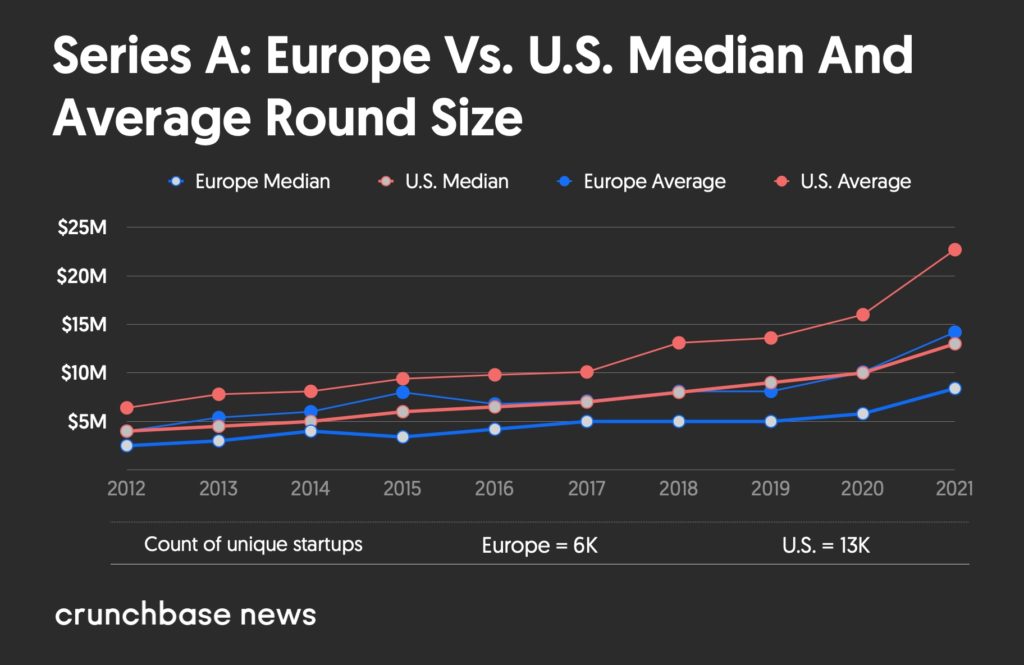
Seed comparison
However, the average seed funding in Europe compared to the U.S. was on par in 2021, while the median was lower.
Between 2012 and 2020, European seed-stage startups raised on average between two-thirds and three-fourths of what their U.S. startup peers raised. Last year, that proportion was 96 percent, due in part to some large European seed fundings.
In fact, the median seed and pre-seed funding round in Europe in 2021 was $1 million and the average $2.3 million. In the U.S., the median seed was $1.3 million, while the average was almost on par at $2.4 million, per Crunchbase data.
Overall, seed-stage companies in Europe are still raising lower amounts than U.S. companies as the seed-stage micro-venture ecosystem is not as large and established as it is in the U.S. But that gap is shrinking.
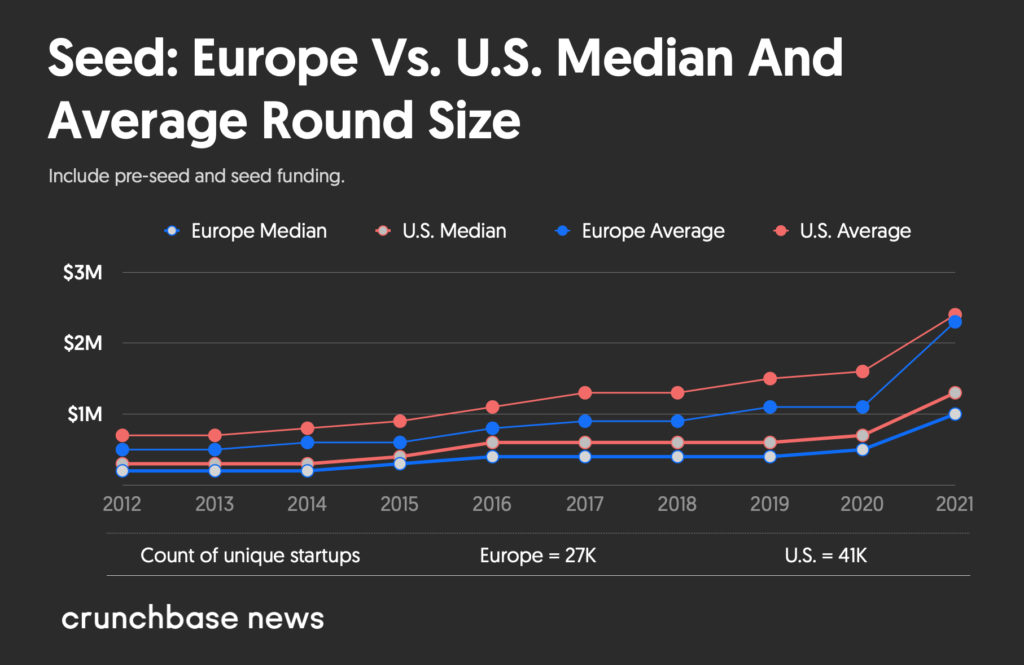
The gap narrows at Series B
The gap between the two funding environments begins to narrow at Series B, Crunchbase data shows.
In Europe, the median Series B last year was $29.4 million. In the U.S. it was $33 million. (The median is perhaps a better indicator of funding size, as it shows the midpoint of fundings in that asset class, and is not skewed by outsized funding rounds.)
The average Series B in Europe was $47.3 million and in the U.S. $50.2 million.
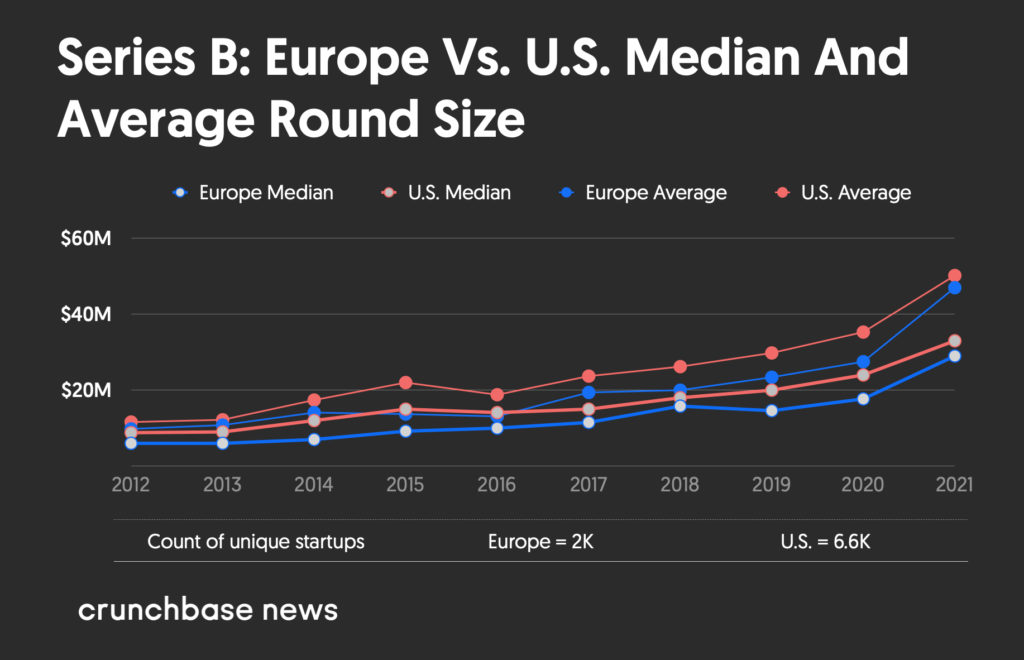
Series C in Europe shoots up
By Series C, later-stage European startups are raising more—both in terms of average and median round size—than their U.S. counterparts.
Compared to other funding stages in Europe, late-stage fundings in 2021 grew the most year over year, at 230 percent. Growth equity investors from across the globe invested heavily in European startups, especially at those later stages.
The globalization of the late-stage funding ecosystem, as well as the smaller number of startups funded at late stage in Europe compared to the U.S. might be part of the reason these startups were better funded compared to their U.S. counterparts in 2021.
Overall, European startups funded at Series C and later have greater capital allocated to them than U.S. funded companies at that stage.
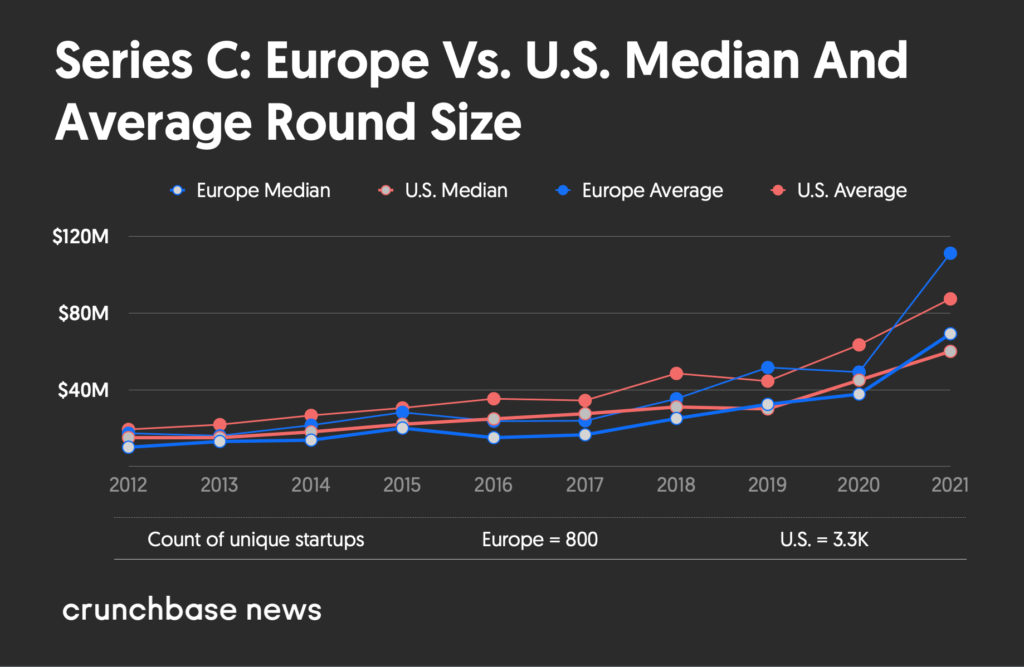
Up and up to the right
Across each funding stage, average and median fundings have grown dramatically over the decade in both the U.S. and Europe.
In 2012, seed funding averages in both markets were well below $1 million, Series A well below $10 million and Series B well below $20 million, Crunchbase data shows. The median Series C funding was less than $20 million.
These amounts—which are now 3x and in some instances closer to 7x higher—means that larger funds are more competitive at each funding stage.
Search less. Close more.
Grow your revenue with all-in-one prospecting solutions powered by the leader in private-company data.
Who’s investing
Are European investors losing out to well-funded U.S. investors who have in recent years committed to Europe? Not according to our analysis of leading investors by stage.
U.S.-based investors in 2021 led 14 percent of seed rounds for European startups, 28 percent of early-stage fundings, and 43 percent of late-stage fundings in rounds with a disclosed lead investor, Crunchbase data shows.
Europe-based investors, meanwhile, led 77 percent of seed fundings on the continent, 68 percent of early-stage and 49 percent of late-stage fundings with a known lead investor.
As always, the investors who make their bets early—in this case, largely European investors putting capital into startups in their backyard—stand to gain from this growth.
Methodology
The data contained in this report comes directly from Crunchbase, and is based on reported data. Data reported is as of Jan. 28, 2022.
Note that data lags are most pronounced at the earliest stages of venture activity, with seed funding amounts increasing significantly after the end of a quarter/year.
The most recent year will increase over time relative to previous quarters. For funding counts, we notice a strong data lag, especially at the seed and early stages, by as much as 30 percent to 40 percent a year out.
Please note that all funding values are given in U.S. dollars unless otherwise noted. Crunchbase converts foreign currencies to U.S. dollars at the prevailing spot rate from the date funding rounds, acquisitions, IPOs and other financial events are reported. Even if those events were added to Crunchbase long after the event was announced, foreign currency transactions are converted at the historic spot price.
Illustration: Dom Guzman
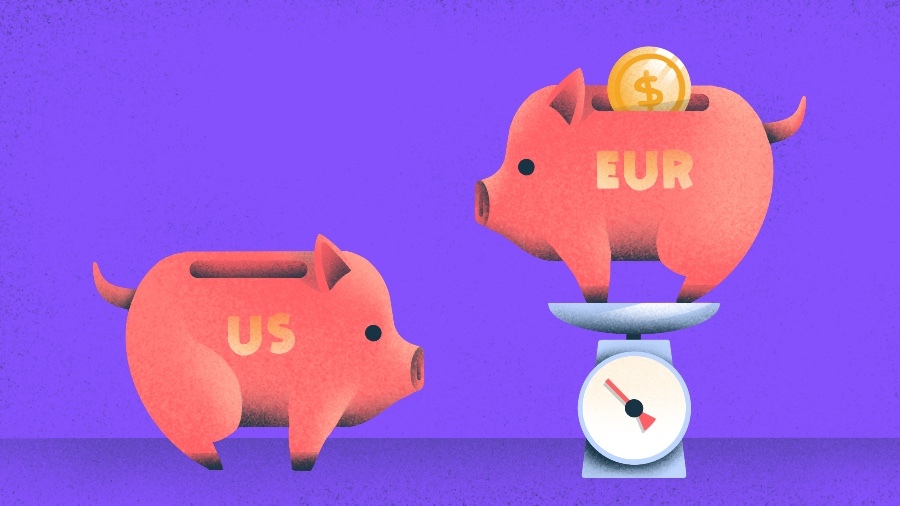
Stay up to date with recent funding rounds, acquisitions, and more with the Crunchbase Daily.


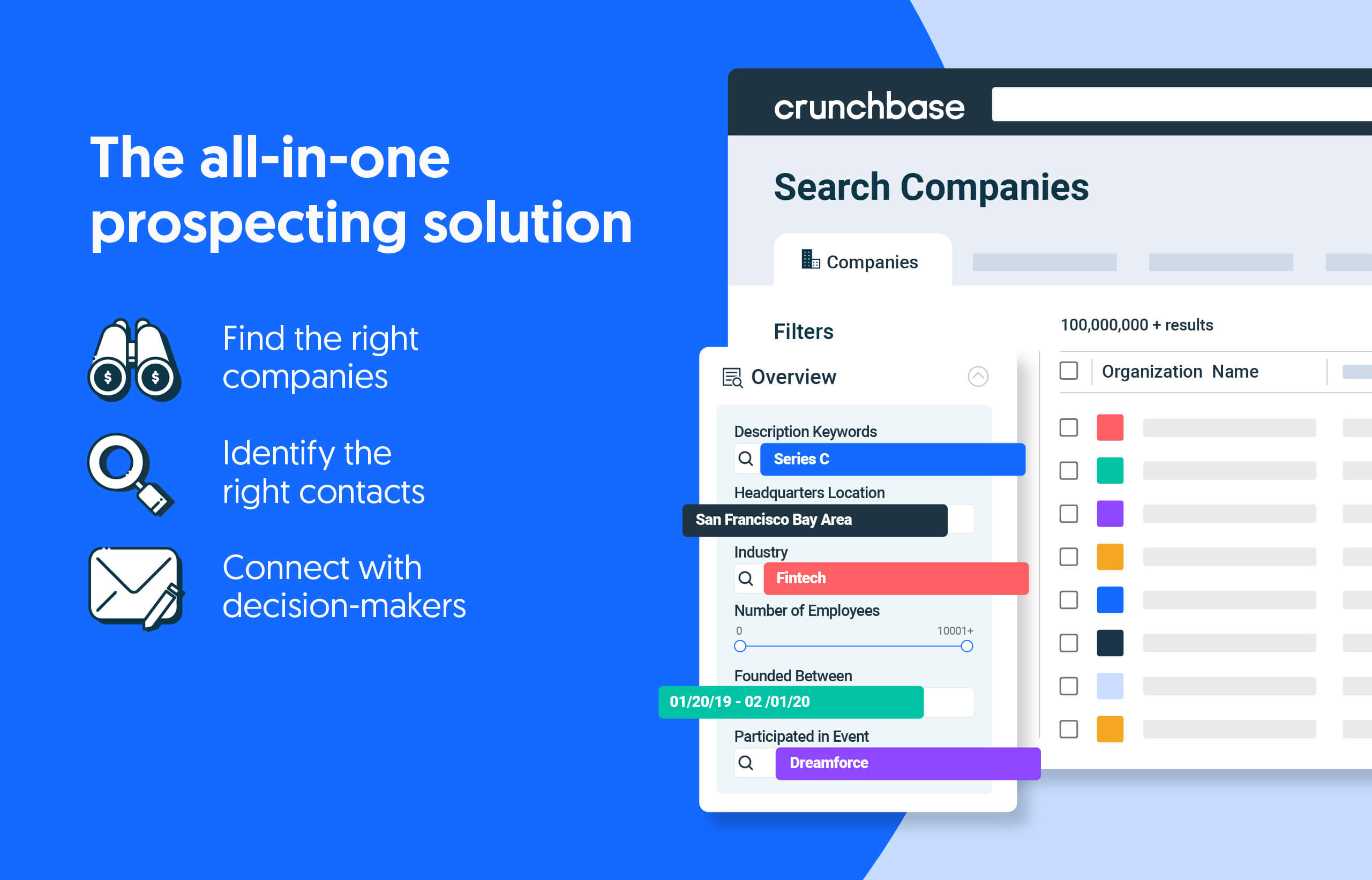


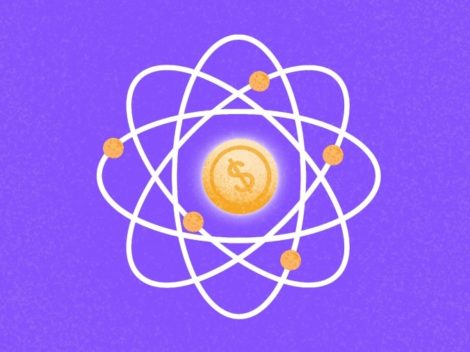

![Illustration of a guy watering plants with a blocked hose - Global [Dom Guzman]](https://news.crunchbase.com/wp-content/uploads/quarterly-global-3-300x168.jpg)
67.1K Followers